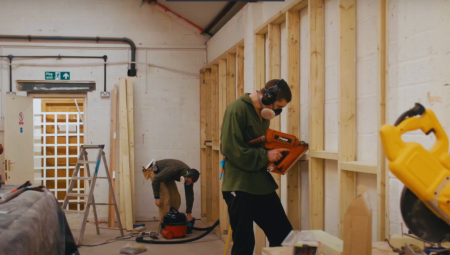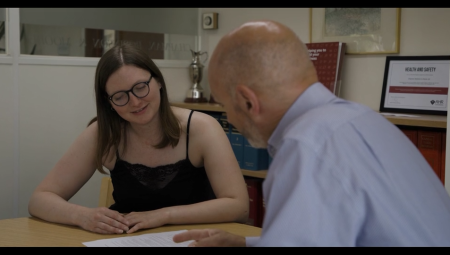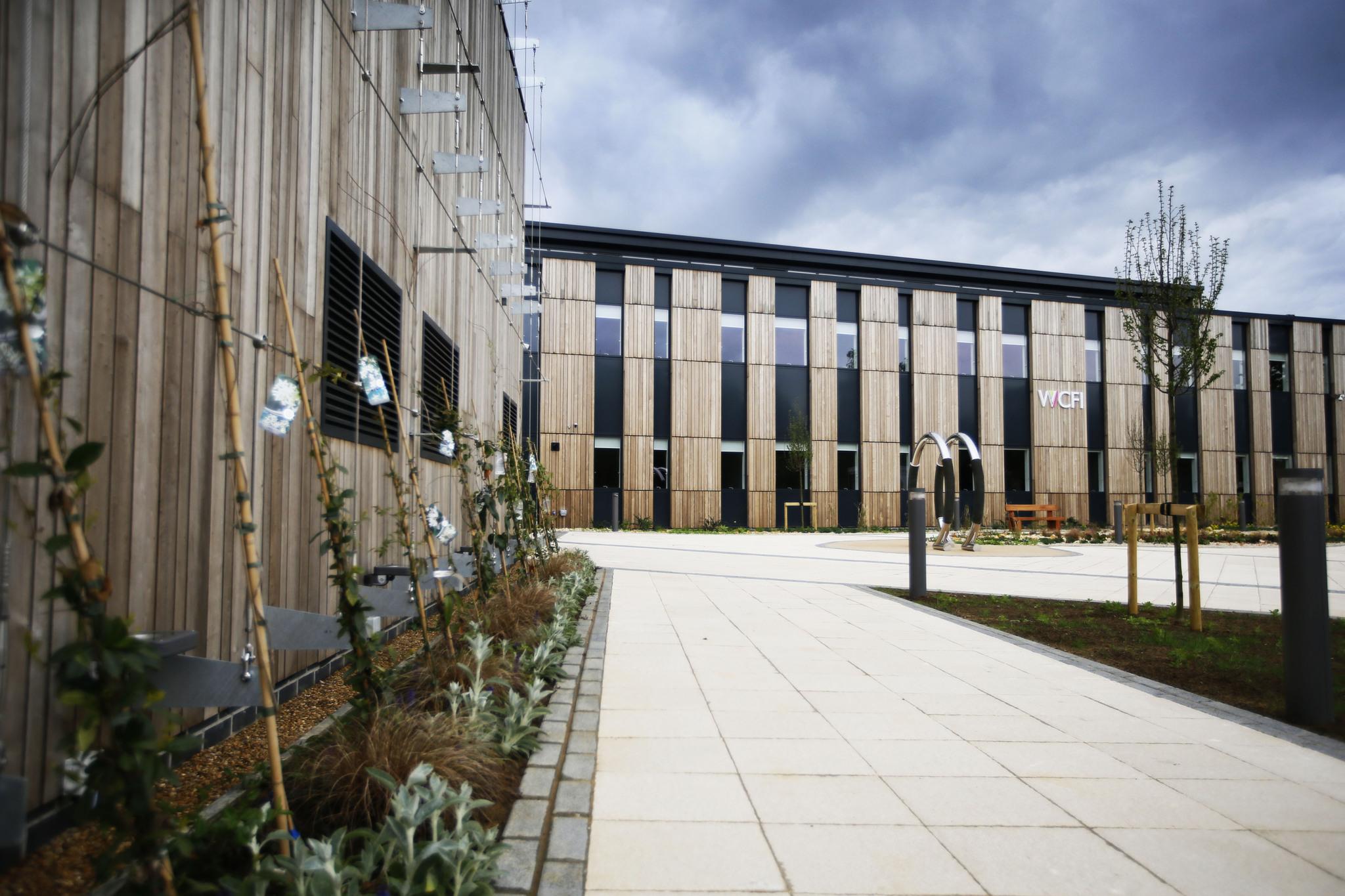
ARTICLE
An energy efficient workplace: The Oxford Trust
We recently worked with The Oxford Trust to look at the energy efficiency of their workplaces in Oxford: the Wood Centre for Innovation, and the Oxford Centre for Innovation.
The Oxford Trust is an independent charitable trust with a mission to encourage the pursuit of science and enterprise. They have a public-facing brand, Science Oxford, which runs science education and engagement programmes. They also own and run two innovation centres in Oxford (managed on their behalf by Oxford Innovation): the Oxford Centre for Innovation in Oxford’s city centre, and the Wood Centre for Innovation (where Science Oxford are based) in Headington.
Both of these centres offer office, technical workspace, co-working space and R&D labs for several local science and technology businesses and organisations – including the Low Carbon Hub, one of our three project partners.
The Wood Centre for Innovation opened in 2019 and was built with energy efficiency in mind. On the other hand, the Oxford Centre for Innovation is a much older building, and much less energy efficient than its sister centre. Energy bills are around 40-50% higher, despite being a similar size. We’re currently working with the Trust to explore potential ways that they could improve the energy efficiency of their Oxford Centre for Innovation to cut carbon emissions and energy bills.
Energy bills at the Oxford Centre for Innovation are 40-50% higher than at the energy efficient Wood Centre for Innovation.
So, what does this mean for The Oxford Trust as a business? That’s what we’ll explore in this post, first giving an overview of the two different buildings, before looking at the benefits of the much more energy efficient Wood Centre for Innovation.
The Oxford Centre for Innovation


When The Oxford Trust acquired the Oxford Centre for Innovation their plan was to knock down the old, existing building on the site and build a new science and innovation centre. In the end, this wasn’t possible and they found a new location and built the Wood Centre for Innovation in Headington!
The Oxford Centre for Innovation continues to be used as office space for over 200 people working in science and technology start-ups and spinouts. The Oxford Trust has looked at what energy efficiency improvements could be made on site and has installed solar panels on the roof and implemented a rolling system for replacing lights with LED bulbs as rooms become vacant. Larger scale, whole building improvements such as external insulation and window replacement are proving tricky because the building has current occupants.
The centre is a perfectly functional workplace, but one that isn’t as energy efficient as it could be – meaning high energy bills, excess carbon emissions and higher ongoing maintenance costs to keep the working environment as comfortable as possible.
We’re currently working with The Oxford Trust on ways to continue making improvements at the Oxford Centre for Innovation, so watch this space for a case study coming soon.
The Wood Centre for Innovation
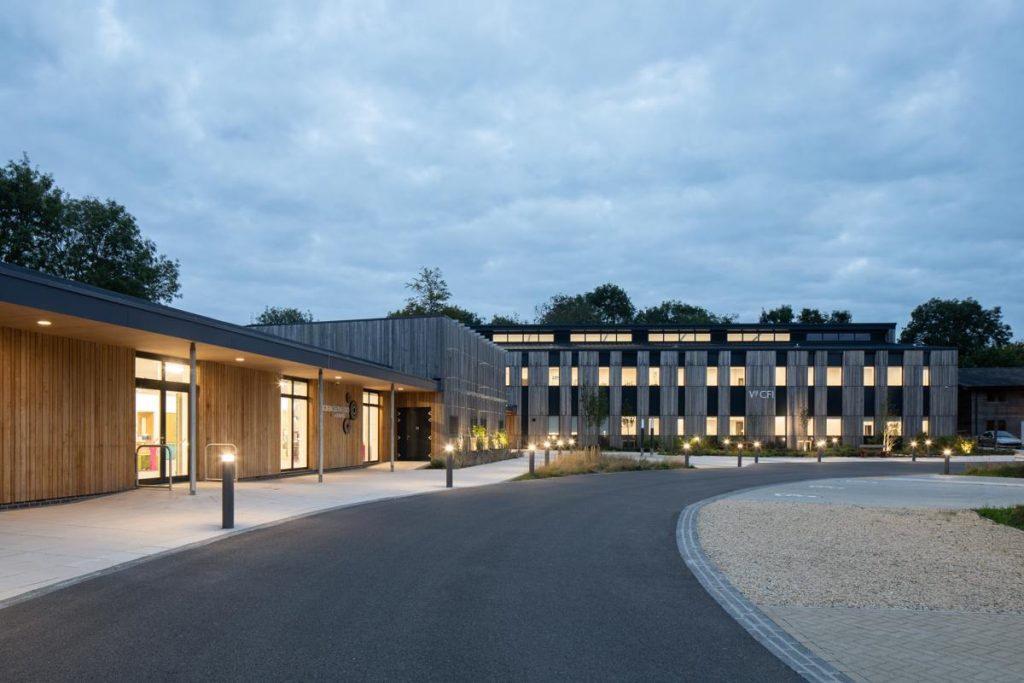
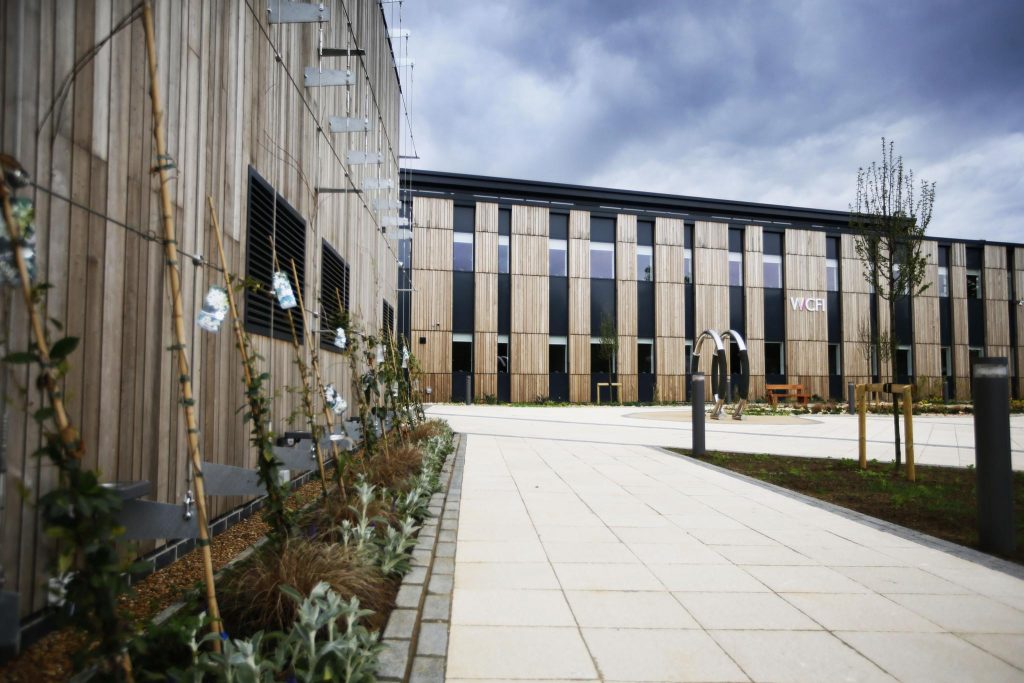
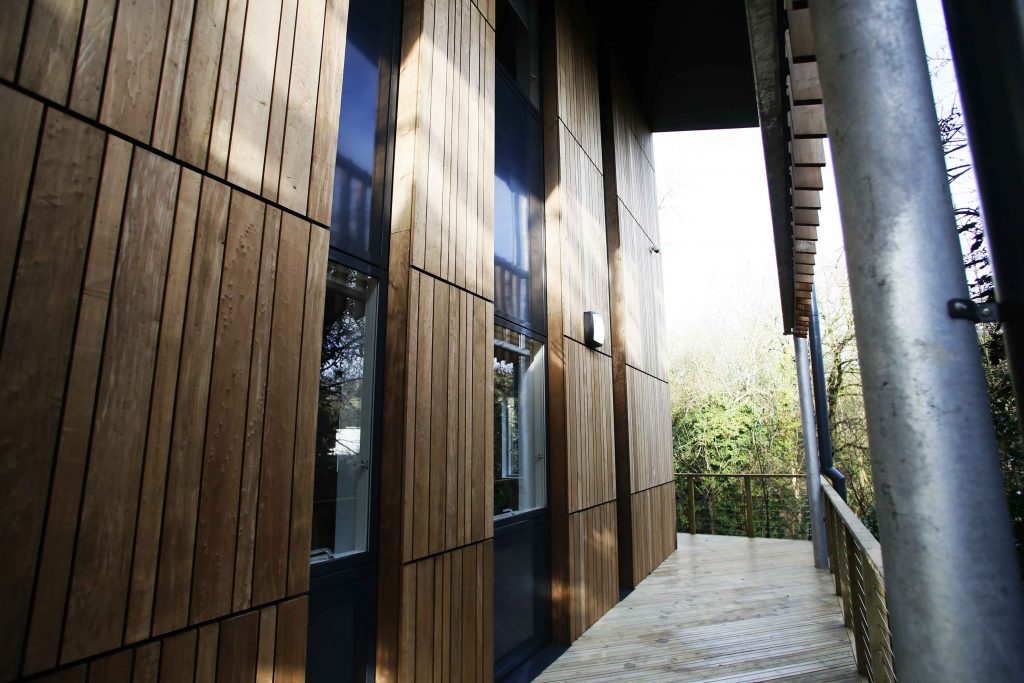
On the other end of the scale is the Wood Centre for Innovation, based at Stansfeld Park in Headington. The Oxford Trust acquired the lease for what used to be the Stansfeld Outdoor Education Centre in Headington in January 2016, with the idea to create an innovation centre offering office, technical workspace and R&D lab space for companies working in science and technology. It would also house the UK’s first indoor/ outdoor hands-on science education centre run by Science Oxford, the public-facing brand of The Oxford Trust.
The team knew that they wanted to create a fantastic office space with a minimal carbon footprint, and so energy performance was a key consideration right from the start. The site is surrounded by a 15-acre woodland setting, so they also wanted to be able to improve the biodiversity of the environment around them – which would also be used for science education by Science Oxford.
The end result is a building which is designed to heat and cool itself with minimal intervention from a heating and cooling system, with an EPC A rating (score of 17). This was done through:
- Air source heat pumps as the main heating system
- Underfloor heating throughout, which combined with exceptional air tightness ensures the building retains heat for a long time
- A natural ventilation system which means that if any room is too hot the relevant north-facing windows at the apex of the building open up
- Monitors in each room ensuring temperature and CO2 levels are maintained and prompting users to open windows when needed. This combines with the automatic windows to facilitate air movement.
- The smallest amount of air conditioning, only where it is absolutely necessary for landlocked rooms with little access to the outside
- An overhang around the outside of the building to allow shading and limit direct sunlight into the offices, meaning minimal cooling is needed on hot days
- A solar PV panel array on the roof of the building which generates renewable energy to power the building, meaning the energy consumption outside of this minimal.
What are the benefits of a more energy efficient workplace?
Because The Oxford Trust owns and manages both the Oxford Centre for Innovation and the Wood Centre for Innovation (managed on their behalf by Oxford Innovation), they are in a great position to evaluate the differences between the two workplaces. Speaking to Matt, there are some clear benefits to the more energy efficient workplace of the two, the Wood Centre for Innovation.
Enhanced comfort and well being for staff and residents
The Wood Centre for Innovation is naturally a comfortable temperature all year round, without having to heat and cool the space excessively. Take the summer of 2019, for instance. In Oxford the temperature reached 37 degrees Celsius outside, but the temperature inside was withing a comfortable range throughout – more than 10 degrees cooler than ambient temperature despite no active cooling. This is the key benefit of being a much more comfortable and attractive workplace for their residents, with less need to close the office and send staff home on the hottest days of summer.
Plus, this has had added benefits in 2020. The Covid-19 pandemic has meant that ventilation in indoor spaces is more important than ever – it’s much easier to prevent the spread of airborne viruses if air is coming in and out rather than just circulating, and the natural ventilation system at the Wood Centre for Innovation meant that this was already in place, with air constantly dispersing and being flushed out from the building.
Reduced energy bills
The Oxford Centre for Innovation and the Wood Centre for Innovation are very similar in terms of building size, yet the energy bills at the Wood Centre for Innovation are around 50% of those at the Oxford Centre. This is simply because the Wood Centre for Innovation is using much less energy to provide the same level of comfort in terms of heating, cooling, and lighting.
Energy bills and running costs are important for any organisation, but The Oxford Trust is a charity, and so any spend is even more important for them. They have a requirement and responsibility to ensure that as much of their resources as possible can be spent on the mission of encouraging the pursuit of science and enterprise. Reducing their energy bills means more money to spend on this mission.
Addressing the environmental impact of the company
The Oxford Trust does not yet have explicit objectives to address the environmental impact of the organisation. However, they do recognise that it’s becoming more and more important for organisations to do their bit to tackle the climate crisis – and this includes energy use in their premises. Particularly, stakeholders within The Oxford Trust were increasingly wanting to see work done to reduce the environmental impact of the company, including staff and residents of their buildings.
Take the Low Carbon Hub, our project partner, for instance. They’re a social enterprise out to prove that we can meet our energy needs in a way that’s good for the planet, creating renewable installations across Oxfordshire and working on projects to reduce energy demand – including energy solutions Oxfordshire, of course. Before December 2019 they were based in an office on Park End Street, Oxford in an old building which was not energy efficient at all. When they were looking for a new office space, the Wood Centre for Innovation had the added benefit of being a building which had been built to be as energy efficient as possible with a minimal carbon footprint. For an organisation working towards a zero carbon energy system, this was a huge factor in choosing their new office space, and a great selling point for the Wood Centre for Innovation.
A huge thank you to Matt Francis for his time in sharing his time and this information with us, and we look forward to working with The Oxford Trust to continue improving the energy efficiency of their workplaces.

Thanks for reading!
Energy Solutions Oxfordshire is a complete energy efficiency service, helping organisations lower their energy use, while saving time and money. Get started by filling out our online survey to get a free Desktop Diagnosis Report for your organisation.
Did you like what you read?
Then share this page with a colleague to keep the
conversation going and spark new ideas.

